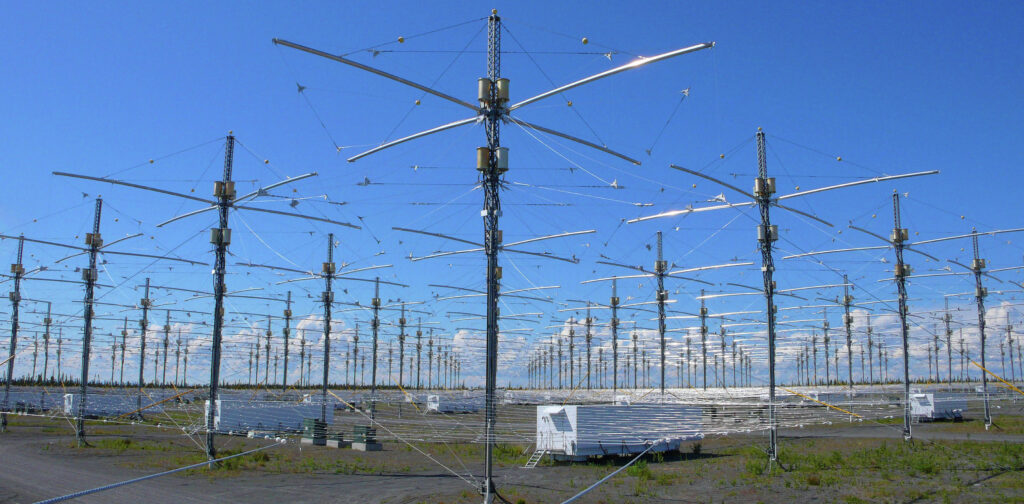HAARP: High-Frequency Active Auroral Research Program

The High-Frequency Active Auroral Research Program (HAARP) is a research initiative jointly funded by the U.S. Air Force, the U.S. Navy, the Defense Advanced Research Projects Agency (DARPA), and the University of Alaska. Located in Gakona, Alaska, HAARP consists of a high-power, high-frequency transmitter and an array of antennas designed to study the ionosphere, a region of Earth’s upper atmosphere.
HAARP’s primary scientific goal is to investigate and understand the fundamental properties of the ionosphere and how it interacts with radio waves. The ionosphere plays a crucial role in the transmission of radio signals and has implications for communication, navigation, and surveillance systems. By using HAARP, scientists can simulate and observe ionospheric processes, contributing to advancements in communication and navigation technologies.
There is a persistent conspiracy theory suggesting that HAARP could be used to manipulate weather patterns, including causing storms, hurricanes, or droughts. However, this notion lacks scientific support, and mainstream scientific understanding refutes the idea that HAARP has the capability to control or change the weather.
HAARP’s radio frequency transmitter sends energy into the ionosphere to create small, controlled disturbances. The resulting observations help scientists to better understand the ionosphere’s behavior and its impact on radio wave propagation. However, the amount of energy used in these experiments is minuscule compared to the natural forces that govern weather patterns on Earth.
Manipulating weather on a large scale involves complex and interconnected processes, such as atmospheric dynamics, ocean currents, and solar radiation. While scientists can influence specific atmospheric conditions under controlled circumstances, the notion that HAARP could be used to create or modify weather events globally is not grounded in scientific reality.








